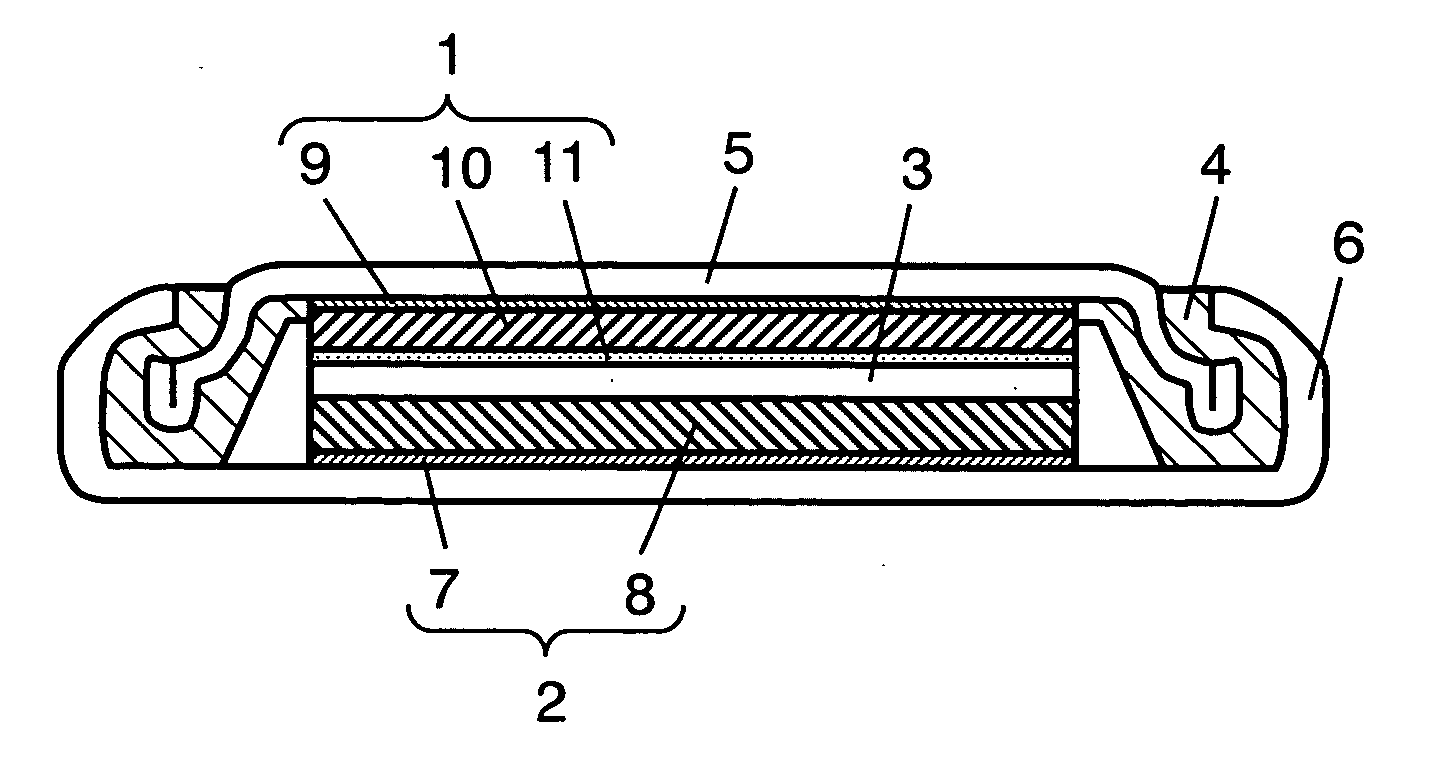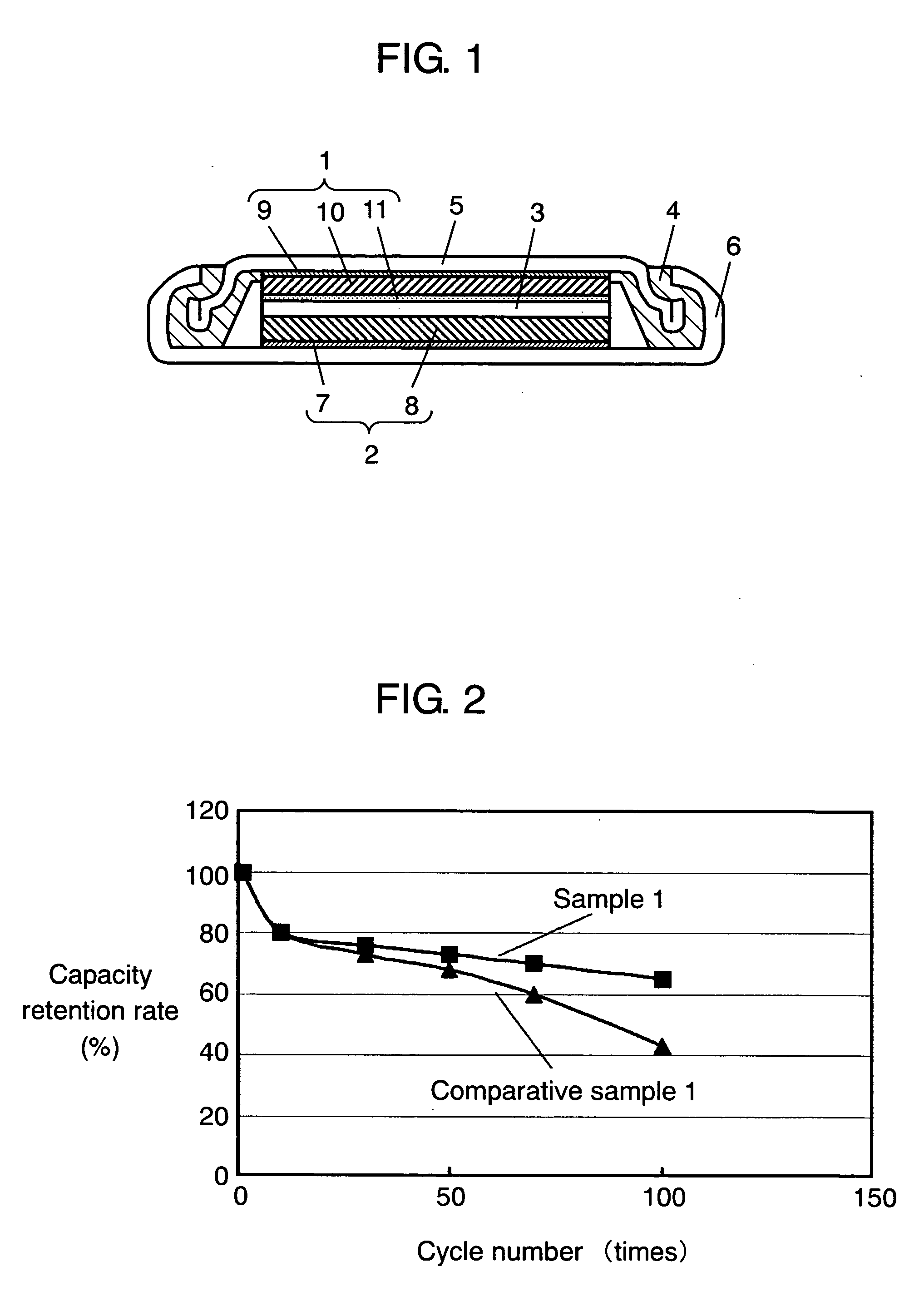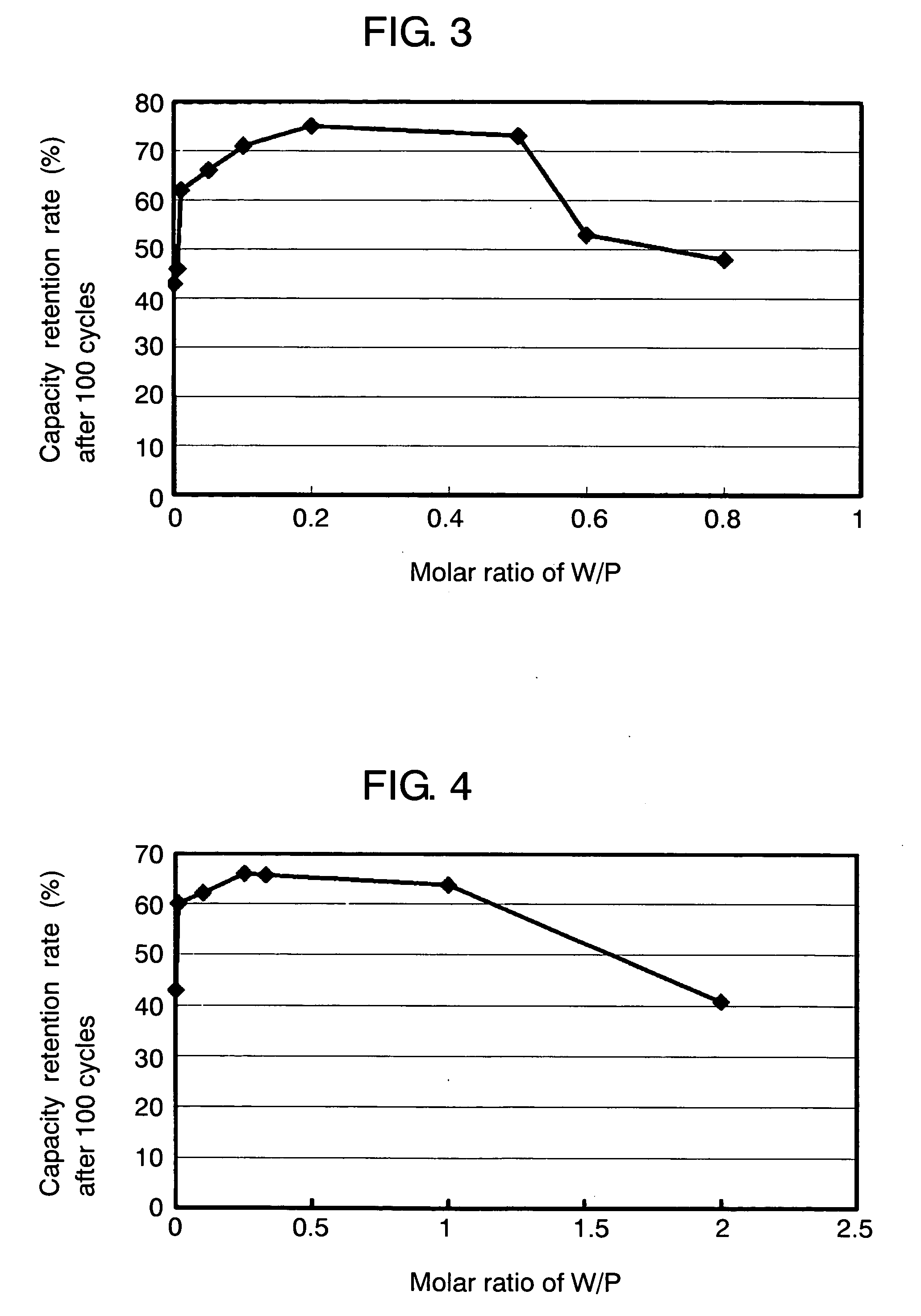Negative electrode for battery and battery using the same
a negative electrode and battery technology, applied in the field of negative electrodes, can solve the problems of deterioration in life characteristics, material characteristics tend to deteriorate, and the capacity of carbonaceous materials has reached the approximate maximum theoretical level, and achieves the effect of preventing the lithium ion conductivity from decreasing, high lithium ion conductivity, and superior battery characteristics
- Summary
- Abstract
- Description
- Claims
- Application Information
AI Technical Summary
Benefits of technology
Problems solved by technology
Method used
Image
Examples
first exemplary embodiment
[0029]FIG. 1 is a sectional view of a battery using a negative electrode according to a first embodiment of the present invention. The battery has negative electrode 1, positive electrode 2 which faces negative electrode 1 and reduces lithium ions when discharging, and electrolyte 3 which intervenes between negative electrode 1 and positive electrode 2 to conduct lithium ions. Negative electrode 1 and positive electrode 2, along with electrolyte 3, are contained in case 6 with gasket 4 and lid 5. Positive electrode 2 is composed of positive electrode collector 7 and positive electrode active material layer (referred to as “active material layer” hereinafter) 8, including positive electrode active material. Negative electrode 1 has collector 9, negative electrode active material layer (referred to as “active material layer” hereinafter) 10 provided on the surface of collector 9, and additionally inorganic compound layer 11 with lithium ion conductivity formed on the surface of active...
second exemplary embodiment
[0079] A conceptual diagram illustrating the basic structure according to a second embodiment of the present invention is the same as FIG. 1. Inorganic compound layer 11 on negative electrode 1 according to this embodiment is composed of a compound having the chemical composition expressed by LixMOyNz. M is at least one kind of element selected from the element group of element symbols Si, B, Ge, Al, C, Ga, and S, and additionally x, y, and z satisfy 0.6≦x≦1.0, 1.05≦y≦1.99, and 0.01≦z≦0.5, respectively; 1.6≦x≦2.0, 2.05≦y≦2.99, and 0.01≦z≦0.5, respectively; 1.6≦x≦2.0, 3.05≦y≦3.99; 0.01≦z≦0.5, respectively; or 4.6≦x≦5.0, 3.05≦y≦3.99, and 0.01≦z≦0.5, respectively. Compound LixMOyNz is also material superior in lithium ion conductivity and moisture resistance, and is discovered by the inventors of the present invention as disclosed in Japanese Patent Unexamined Publication No. 2005-38844.
[0080] Bonding between component element M and oxygen in LixMOyNz is thermodynamically more stable ...
PUM
| Property | Measurement | Unit |
|---|---|---|
| thickness | aaaaa | aaaaa |
| surface roughness | aaaaa | aaaaa |
| thickness | aaaaa | aaaaa |
Abstract
Description
Claims
Application Information
 Login to View More
Login to View More - R&D
- Intellectual Property
- Life Sciences
- Materials
- Tech Scout
- Unparalleled Data Quality
- Higher Quality Content
- 60% Fewer Hallucinations
Browse by: Latest US Patents, China's latest patents, Technical Efficacy Thesaurus, Application Domain, Technology Topic, Popular Technical Reports.
© 2025 PatSnap. All rights reserved.Legal|Privacy policy|Modern Slavery Act Transparency Statement|Sitemap|About US| Contact US: help@patsnap.com



